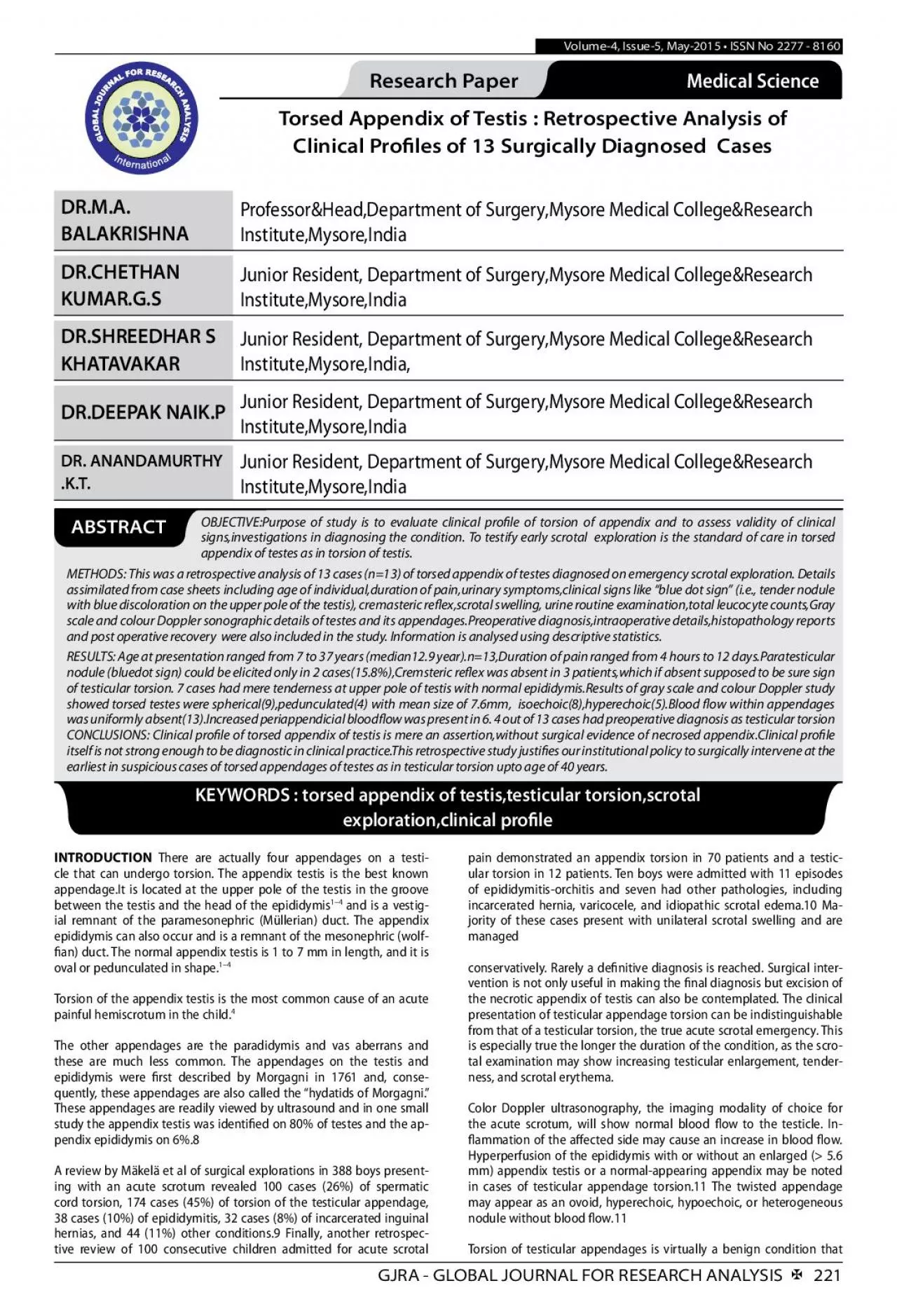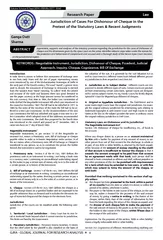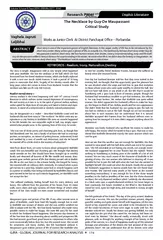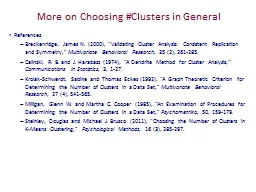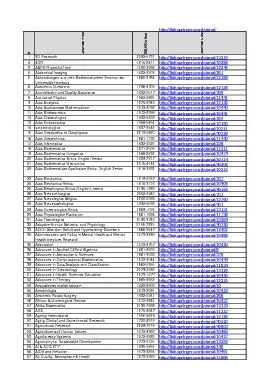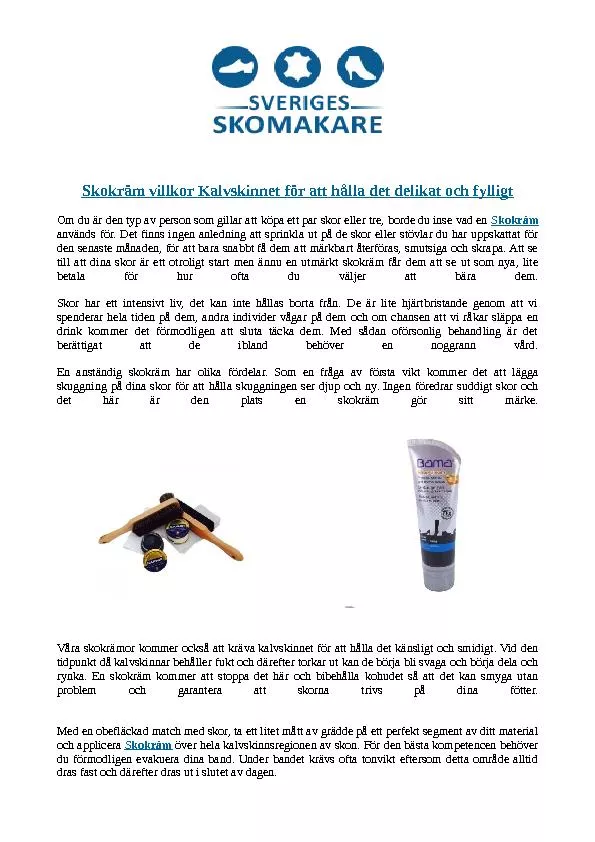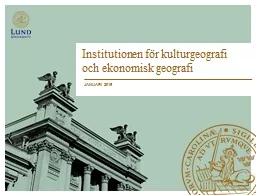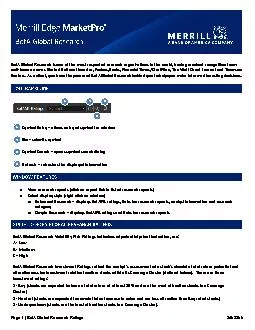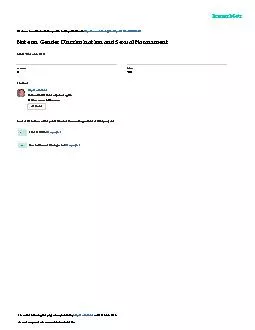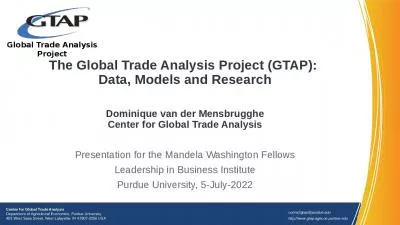PDF-GJRA GLOBAL JOURNAL FOR RESEARCH ANALYSIS
Author : patricia | Published Date : 2022-08-16
Research Paper Medical Science Torsed Appendix of Testis Retrospective Analysis of Clinical Pro31les of 13 Surgically Diagnosed Cases BALAKRISHNAProfessorHeadDepartment
Presentation Embed Code
Download Presentation
Download Presentation The PPT/PDF document "GJRA GLOBAL JOURNAL FOR RESEARCH ANALYS..." is the property of its rightful owner. Permission is granted to download and print the materials on this website for personal, non-commercial use only, and to display it on your personal computer provided you do not modify the materials and that you retain all copyright notices contained in the materials. By downloading content from our website, you accept the terms of this agreement.
GJRA GLOBAL JOURNAL FOR RESEARCH ANALYSIS: Transcript
Download Rules Of Document
"GJRA GLOBAL JOURNAL FOR RESEARCH ANALYSIS"The content belongs to its owner. You may download and print it for personal use, without modification, and keep all copyright notices. By downloading, you agree to these terms.
Related Documents

